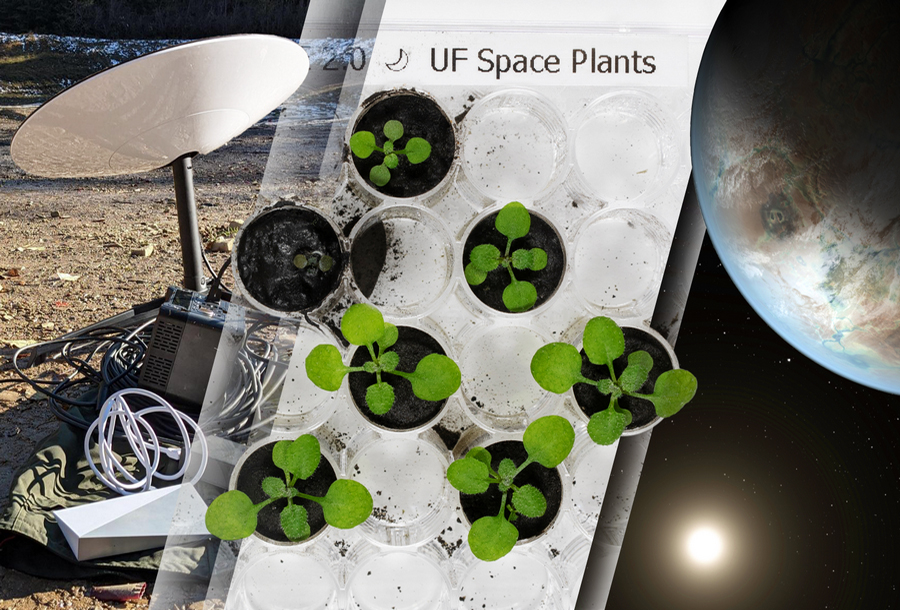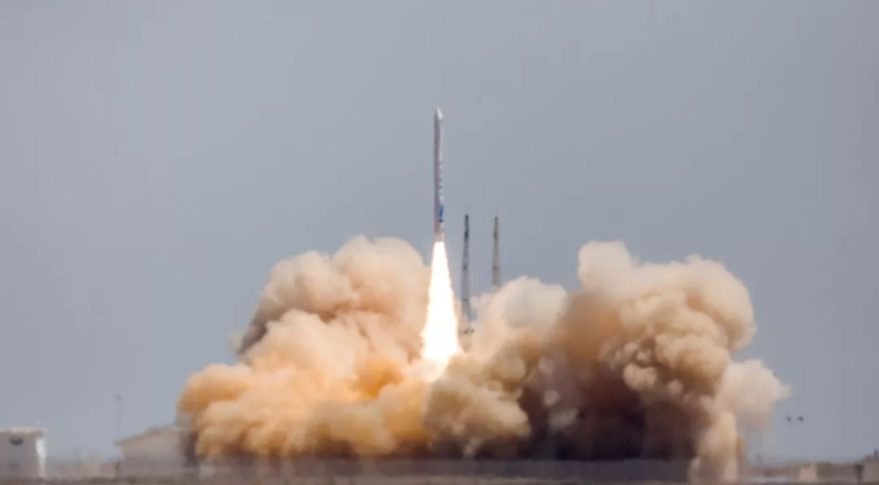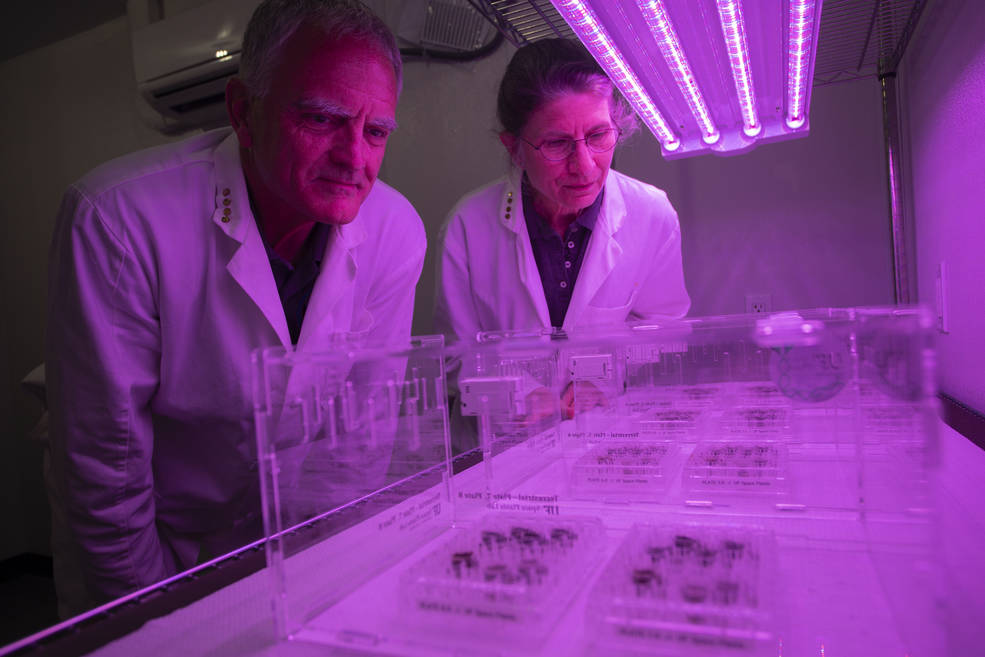Selection of space news for breakfast: Astra has told details about its new launch vehicle, NASA employees do not want to work in Russia, and scientists have grown plants in the lunar soil.

- Space Force to select small rocket for ‘responsive space’ mission
- ISS partnership feeling some effects of sanctions on Russia
- Chinese military deeply alarmed over Starlink’s dual-use capabilities
- Chinese rocket company suffers third consecutive launch failure
- Space transport services Market (growth and prospects) 2022-2028 (report)
- BIS Research Study Highlights the Small Launch Vehicle Market to reach $4.62 billion by 2032
- Astra reveals details of next, larger rocket
- SES mulls direct-to-handheld 5G satellite business
- Scientists successfully grow plants in soil from the Moon
- Mars sample return: Could Red Planet life contaminate Earth?
Space Force to select small rocket for ‘responsive space’ mission
The Space Systems Command plans to award a contract in August for the Tactically Responsive Space (TacRS-3) mission. The U.S. Space Force plans to select a small satellite launcher to fly a payload to low Earth orbit on short notice. Responsive space is a catchphrase for rapid access to commercial launch vehicles that can be rapidly integrated with payloads and launched during a conflict or a crisis to replace a damaged satellite or augment existing constellations. Congress inserted $50 million in the 2022 defense budget for this effort. TacRS-3 will be managed by the Space Force’s Rocket Systems Launch Program. Vendors that were pre-selected for the Orbital Services Program OSP-4 will compete for the task order.
ISS partnership feeling some effects of sanctions on Russia
While operations of the International Space Station continue without “serious interruptions,” sanctions on Russia for its invasion of Ukraine are starting to have an effect on some activities, NASA’s safety advisers said. These problems include limited travel opportunities as airlines reduce or suspend flights to Moscow. Credit cards are difficult or impossible to use as banks halt operations in Russia. There has also been a “voluntary departure” of some NASA personnel and their families from Russia, forcing NASA “to manage the workforce more tightly and more aggressively than they have in the past. The sanctions are also having a “peripheral impact” on Russia’s contributions to the ISS partnership. An example she provided is Microsoft’s suspension of support for products in Russia.
Chinese military deeply alarmed over Starlink’s dual-use capabilities
Beijing’s concern echoes Rogozin’s criticism of the South African billionaire’s satellite Internet system. SpaceX’s plans to increase the constellation of Starlink internet satellites from 12,000 to 42,000 “should put the international community on high alert,” China Military Online, a news site affiliated with the Central Military Commission, the PRC’s top national defence organ, has warned.
Market News

Chinese rocket company suffers third consecutive launch failure
An orbital launch attempt by Chinese startup iSpace suffered failure early Friday, following on from two failures last year. Apparent launch footage appeared on a Chinese social media site shortly after launch but a period of silence followed, extending well past the time at which a similar launch could have been declared successful. The failure was confirmed by Chinese state media Xinhua four hours after launch. Teams are investigating the specific reasons for the failure.
Space transport services Market (growth and prospects) 2022-2028 (report)
The research report provides a factual overview and thorough analysis of current and future market trends. The Space Transportation Service Market report highlights general data such as development strategy, competitive environment, opportunities, risks, value chain optimization, technological advances, product offerings from key players and the dynamic structure of the market. The report details the assessment of current opportunities, as well as the assessment of the relationship between supply and demand and the main problems with business threats. Other factors such as competition analysis, trends and expansion strategies are included in the Global Space Transportation Service Market report.
BIS Research Study Highlights the Small Launch Vehicle Market to reach $4.62 billion by 2032
The global small launch vehicle market is projected to reach $4.62 billion in terms of revenue by 2032, at a CAGR of 13.34%, reveals the premium market intelligence study by BIS Research. Since the middle of the 1950s, small-lift launch vehicles have been in development and operation across the globe. After 2014, the SLV market witnessed exponential growth due to an increase in the number of SLV manufacturers and launch service providers.
Astra reveals details of next, larger rocket
Astra disclosed details about its new launch vehicle that will be capable of carrying heavier payloads and flying more frequently. At its “Spacetech Day” event at its Alameda, California, headquarters, company executives offered some details about what it calls Launch System 2.0, a system that includes a new rocket called Rocket 4.0. The vehicle will be able to place up to 300 kilograms into low Earth orbit and 200 kilograms into sun-synchronous orbit at a “base price” of $3.95 million. By contrast, Astra’s current Rocket 3.3 vehicle can accommodate a small fraction of that payload, having to date launched only a few cubesats at a time.
SES mulls direct-to-handheld 5G satellite business
SES is considering plans to provide 5G services directly to handheld devices after rescuing spectrum rights for 62 proposed satellites that were about to expire. “SES applied for this filing through the Lux govt because we recognise the potential of direct-to-handheld 5G satellite connectivity in the years to come,” SES vice president of external communications Suzanne Ong said via email.
Interesting

Scientists successfully grow plants in soil from the Moon
The NASA-funded experiment opens up new horizons in plant research. Scientists have grown the hardy and well-studied Arabidopsis thaliana for the first time in a nutrient-poor lunar regolith. For their experiment, the researchers used just 12 grams (a few teaspoons) of lunar soil collected from various spots on the Moon during the Apollo 11, 12, and 17 missions.
The researchers chose to plant arabidopsis thaliana, a relative of mustard greens, because it grows easily and, most importantly, has been studied extensively. Its genetic code and responses to hostile environments — even in space — are well known. As a control group, seeds were also planted in soil from Earth as well as samples imitating lunar and Martian soil. The result: after two days, everything sprouted, including the lunar samples.
Mars sample return: Could Red Planet life contaminate Earth?
Could returned Mars samples be biological “hot property” that sparks public anxiety about creepy-crawlies from that world chomping away at Earth’s biosphere? Over the past few decades, several different panels of scientific experts from the United States and around the world have tackled the question of whether samples from Mars could present a danger to Earth’s biosphere. The reports from these panels have found an extremely low likelihood that samples collected from areas on Mars like those being explored by Perseverance could possibly contain a biological hazard to our biosphere.
Follow us on Twitter to get the most interesting space news in time
https://twitter.com/ust_magazine
